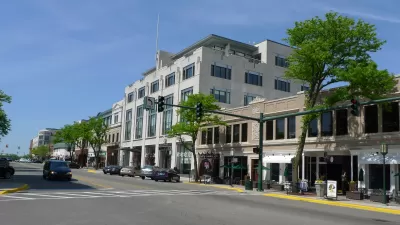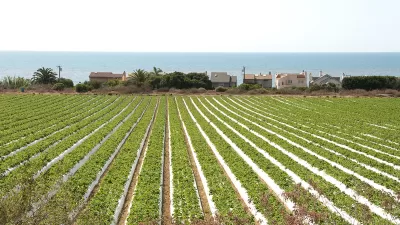Struggling with zoning that thwarts the construction of new hamlets, villages, towns, and cities? Susan Henderson has a bit of place type inspiration from across the pond.
"Planners frequently use the place type framework to identify different issues, challenges, and assets throughout a municipality or a region. While there isn’t a standard used across the profession, it is generally accepted that the broadest range of places includes the hamlet, village, town and city. Historically, we intuitively understood how to build these places without regulation. Commerce and public spaces were located where the majority of residents could access them, and housing was both diverse and compact. This permitted the preservation of the landscape for agriculture and natural systems."
"However, the last decades have seen those clear types evolve into subdivisions, strip centers, malls and office parks. And unfortunately these new development types are virtually the same from region to region and country to country. This is the result of use-based zoning that separates rather than blends compatible uses."
Henderson uses three English examples for inspiration: the village of Castle Combe, the town of Tetbury, and the city of Bath. And points to our auto-centric zoning and subdivision regulations that keep delivering "placeless types" or "car types" or "suburb types," and how we can return to authentic places.

Bath, England; image credit: Susan Henderson
FULL STORY: Why Can’t My Zoning Create a Diversity of Places?

Alabama: Trump Terminates Settlements for Black Communities Harmed By Raw Sewage
Trump deemed the landmark civil rights agreement “illegal DEI and environmental justice policy.”

Planetizen Federal Action Tracker
A weekly monitor of how Trump’s orders and actions are impacting planners and planning in America.

How Atlanta Built 7,000 Housing Units in 3 Years
The city’s comprehensive, neighborhood-focused housing strategy focuses on identifying properties and land that can be repurposed for housing and encouraging development in underserved neighborhoods.

In Both Crashes and Crime, Public Transportation is Far Safer than Driving
Contrary to popular assumptions, public transportation has far lower crash and crime rates than automobile travel. For safer communities, improve and encourage transit travel.

Report: Zoning Reforms Should Complement Nashville’s Ambitious Transit Plan
Without reform, restrictive zoning codes will limit the impact of the city’s planned transit expansion and could exclude some of the residents who depend on transit the most.

Judge Orders Release of Frozen IRA, IIJA Funding
The decision is a victory for environmental groups who charged that freezing funds for critical infrastructure and disaster response programs caused “real and irreparable harm” to communities.
Urban Design for Planners 1: Software Tools
This six-course series explores essential urban design concepts using open source software and equips planners with the tools they need to participate fully in the urban design process.
Planning for Universal Design
Learn the tools for implementing Universal Design in planning regulations.
Jessamine County Fiscal Court
Caltrans
Institute for Housing and Urban Development Studies (IHS)
City of Grandview
Harvard GSD Executive Education
Toledo-Lucas County Plan Commissions
Salt Lake City
NYU Wagner Graduate School of Public Service




























